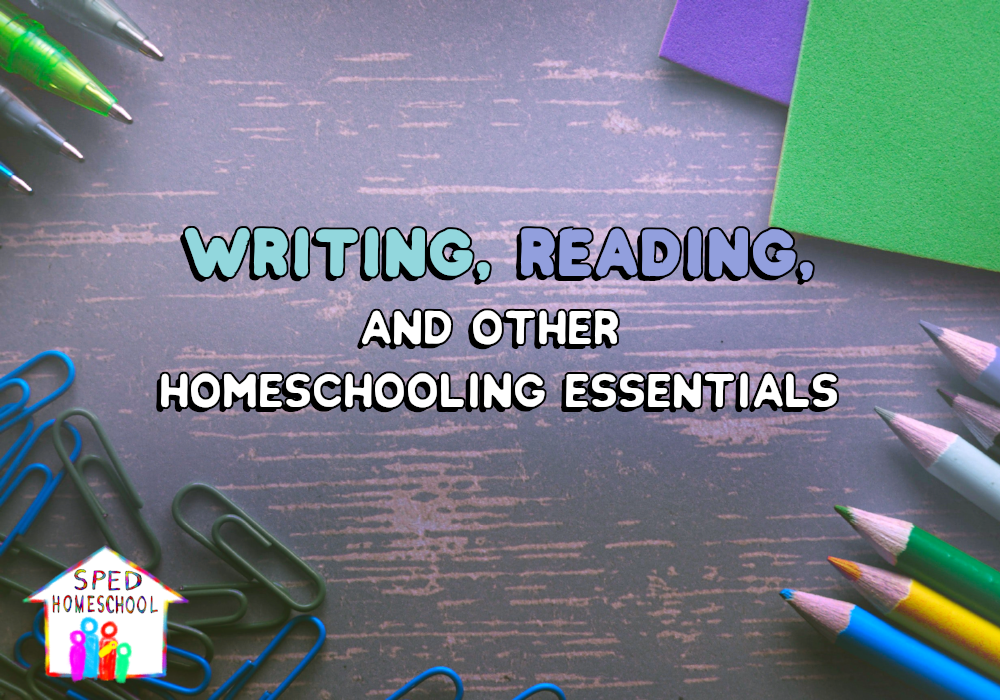
“Ever since the dawn of time, man has needed to work.” Thus began my eleven-year-old son’s thinking paper. The topic: why he should have been cleaning out the garage. We long ago forgot the details of that day, but we never forgot the opening line of that paper!
How did my son learn to write? How does anyone learn to write? Some children, it seems, learn to write as easily as they learn to read, as if without instruction. Others would rather do anything to avoid placing words onto paper. Most fall somewhere in between.
Dysgraphia, this decade’s ubiquitous cousin to dyslexia, offers insights into the writing process for any student. When a child faces neurocognitive impediments to writing, we are all forced to look more closely. What comprises effective writing instruction for any student?
Attend to Readiness
Good writing instruction begins long before we ask a child to hold a pencil. Whether for the beginner or for an older child’s remediation, we must evaluate, teach, and retrace steps in writing readiness to assist skilled writing. We focus on pincer grasp, finger dexterity, and hand strength through clay or playdough, coloring, and scissors exercises, as in SC Level B and Scissors books.
When this readiness is achieved, we work on simple pencil grip, posture, and proper letter formation. We practice so this becomes automatic over time. Working memory has limits for any child, but especially for the child with challenged cognitive function. If we can automate fundamental processes, writing can flow more creatively. “Basic processes need to be made unconscious and automatic as early as possible in order to free the mind.” Hirsch Jr., E.D’s excerpt from The Schools We Need and Why We Don’t Have Them.
Teach the Essentials
Simply providing our students with language models, good literature, and “literary experiences” is not sufficient; we must strengthen their skills for this task. During the primary years, we teach correct spelling, punctuation, penmanship, and sentence composition. We practice, practice, practice these skills to mastery. Generations ago, this was obvious. Today we must remind ourselves.
The good news is this: Thoughtful writing benefits even more than a student’s compositions. The act of writing produces neurocognitive benefits.
See results of the following research contained in these writings:
- “The Effects of Handwriting Experience on Functional Brain Development in Pre-literate Children.” Trends in Neuroscience and Education
- “The Contribution of Handwriting and Spelling Remediation to Overcoming Dyslexia,” Dyslexia – A Comprehensive and International Approach,
- “The Pen Is Mightier Than the Keyboard: Advantages of Longhand Over Laptop Note Taking.” Psychological Science
We must engage our children in the act of writing, beginning with the basics, as soon as we strengthen their fine-motor skills to readiness.
Remember the Humanities
We can teach writing skills explicitly, even as we introduce literature, art, and music for the mind, character, and soul. All comes together to improve the child’s intelligence, moral development, and understanding, and this improves his writing. “Reading makes a full man,” said Francis Bacon, “conversation a ready man, and writing an exact man.”
In classical education, we combine writing with literature and the humanities. We bolster this with the mental disciplines of arithmetic and mathematics. We lead our children to the natural, moral, and theological sciences to give them a lifelong, invaluable gift of true education.
With special teaching strategies and extra practice, we can give this gift to many of our children who face challenges. These challenges include English as a second language, asynchronous development, medical conditions, learning disabilities, sensory impairments, speech and language difficulties, intellectual disability, and autism. Some children will need significant accommodations, but we need not place accommodations above education. Occupational or cognitive therapies should never supplant faithful instruction.
Enjoy the Impact
Teaching writing can bring great joy because words can bring great joy. Words can offer wisdom, comfort, and grace, whether through the well-crafted thinking paper, a poem written in sympathy, or a simple thank-you note. We remember this when our students learn from Simply Classical Writing: Step-by-Step Sentences Book One and Book Two, Bible editions.
The written word connects us as human beings. Even more importantly, God revealed Himself to us through the Word. My children and I were reminded of this as we recently read: “Jesus answered him, saying, It is written, That man shall not live by bread alone, but by every word of God.” His Word brings light and life, hope and comfort, joy and gladness to all mankind. And this has been most certainly true, ever since the dawn of time.
This article first appeared in The Classical Teacher , winter 2017 edition. Reprinted with author’s permission.





